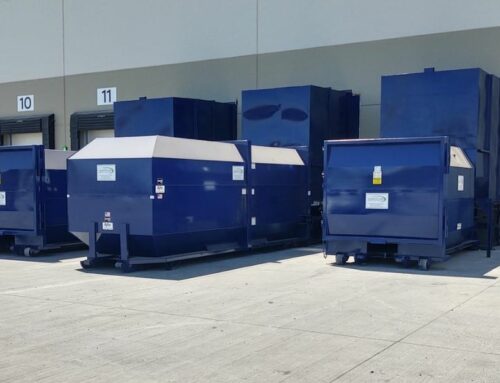At a recent industry event, I was speaking with some city officials from a major US city about the issues they experienced with solid waste disposal in their area. We talked about many concerns such a diversion, stormwater runoff, and reduction of waste plastics. The city officials had a lot of unique ideas about improving the environment in their city, and some included significant overhauls of their constituent’s behavior to reduce waste contamination and send less to the landfill.
I admired the official’s commitment to improving the environment. At one point in the conversation, I asked the city officials if they had considered compactors as part of their solution to their city’s woes.
I got a look from the sustainability coordinators that meant I either had a third arm growing out of my head, or I had suggested burning trash in the city square.
“We’re trying to get rid of all of the compactors, we can’t monitor whether or not they are contaminated, and we want people to produce less trash, not more!”
While I understand their resistance to the idea, let me give you three reasons trash compactors are the green solution no one is talking discussing.
-
Trash Compactors reduce traffic congestion and lower carbon emissions
Cities will spend billions of dollars on light-rail to remediate traffic congestion but balk at the idea of a compactor. There are trash accounts in large cities that are serviced every day of the week by a commercial roll-off truck, which means multiple trips to the site, to the landfill or transfer station, and back to the site. It is an unnecessary use of fuel to haul a container that is only half full or mostly air this frequently. A compactor can eliminate up to 75% off the hauls needed to move the same amount of trash. A compacted trash load results in approximately 75% less fuel and 75% less travel to drive a container around. While this solution lacks the creativity that typically piques interest, compactors are uncomplicated, proven, and cost-effective to implement.
-
Trash compactors limit pollution in stormwater
Across the country, cities are beginning to take notice of what fluids are leaching out of open-top roll-off containers and poorly maintained front load containers. For a good reason, some municipalities and regional governments are requiring lids on all vessels. Compactors are enclosed and shed stormwater. Self-contained compactors such as the Marathon RJ-250 series are a sealed system designed to contain liquid waste and keep it out of the rainwater.
-
Trash compactors all but eliminate scavenging
Major cities around the US are experiencing a growing issue with homelessness. Many factors surround this problem. Increasingly, property managers are experiencing people rummaging through their waste and leaving a mess behind. Worse yet, safety becomes a problem when people climb in and out of the containers to pilfer. Exposed containers pose a more significant issue for rodents as well. Compactors have the option of adding keyed access for greater security. Compactors offer a better environmental choice than open-air containers.
Compactors are not a cutting edge option as they have been around for many years. However, they are a proven solution to environmental problems that exist in every major US city and require minimal capital outlay or disruption to the user’s current operations.
BONUS: Compactors and waste streams have optional monitoring, and many companies are starting to innovate new solutions for service verification and contamination monitoring. Some of these solutions further streamline the waste collection process by notifying the trash hauler precisely when the container is full and efficiently adding it to their route. (See Third Eye, Compology, Enevo, and Sensa Networks)
For more info, Contact us today!
We’ll Help You Find the Right Solution
Contact us today to learn more about partnering with CRA.
"*" indicates required fields



